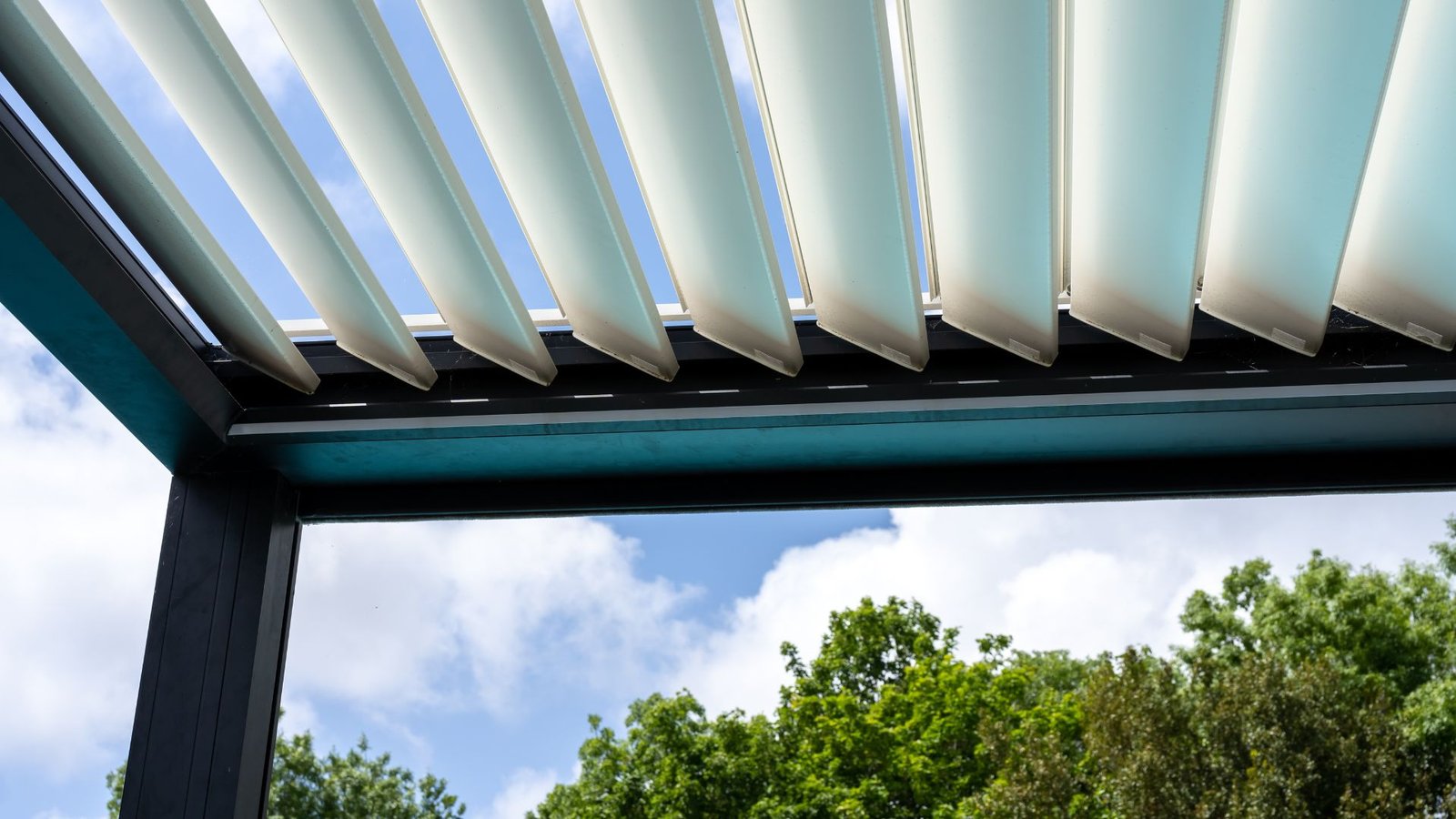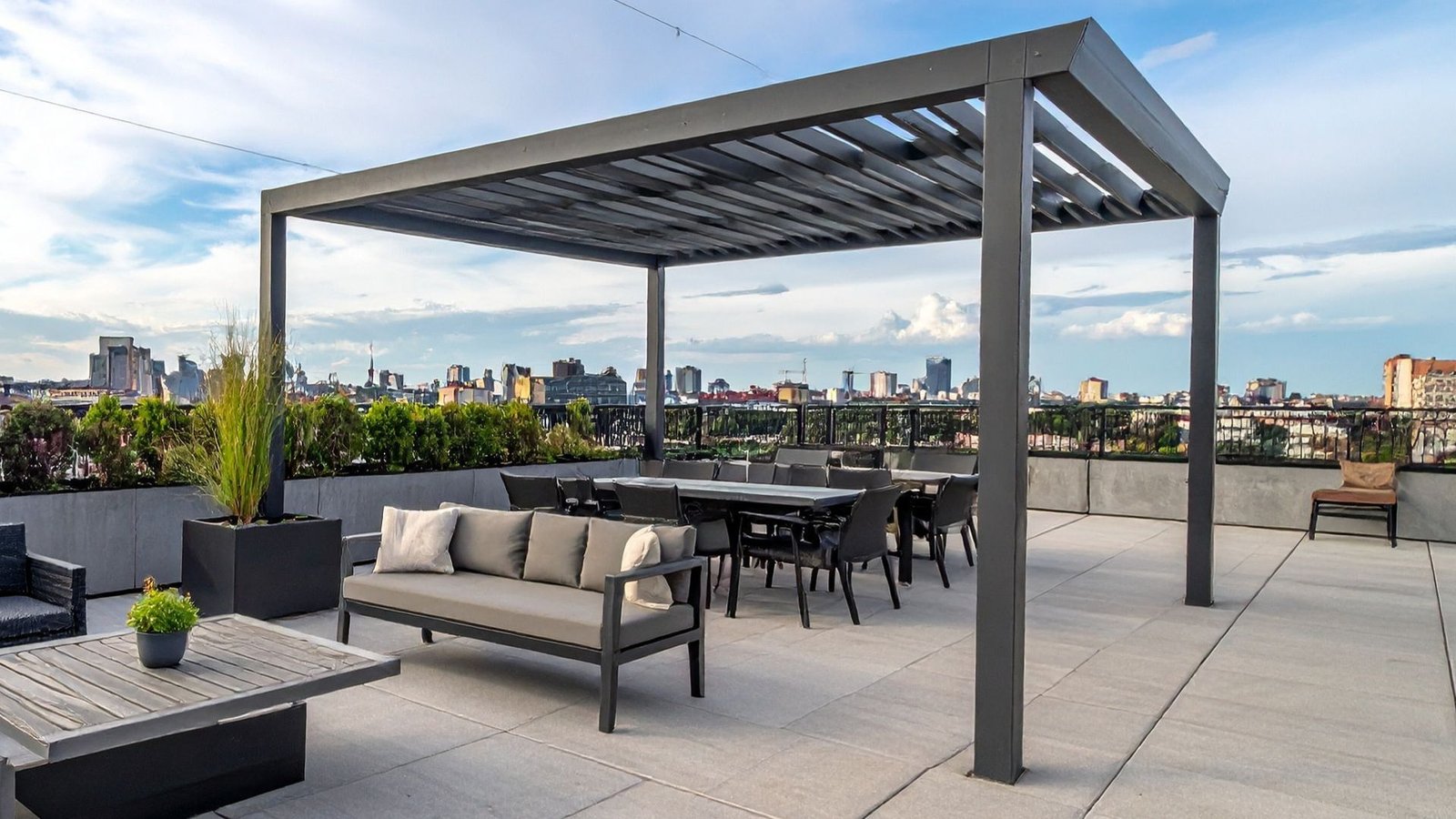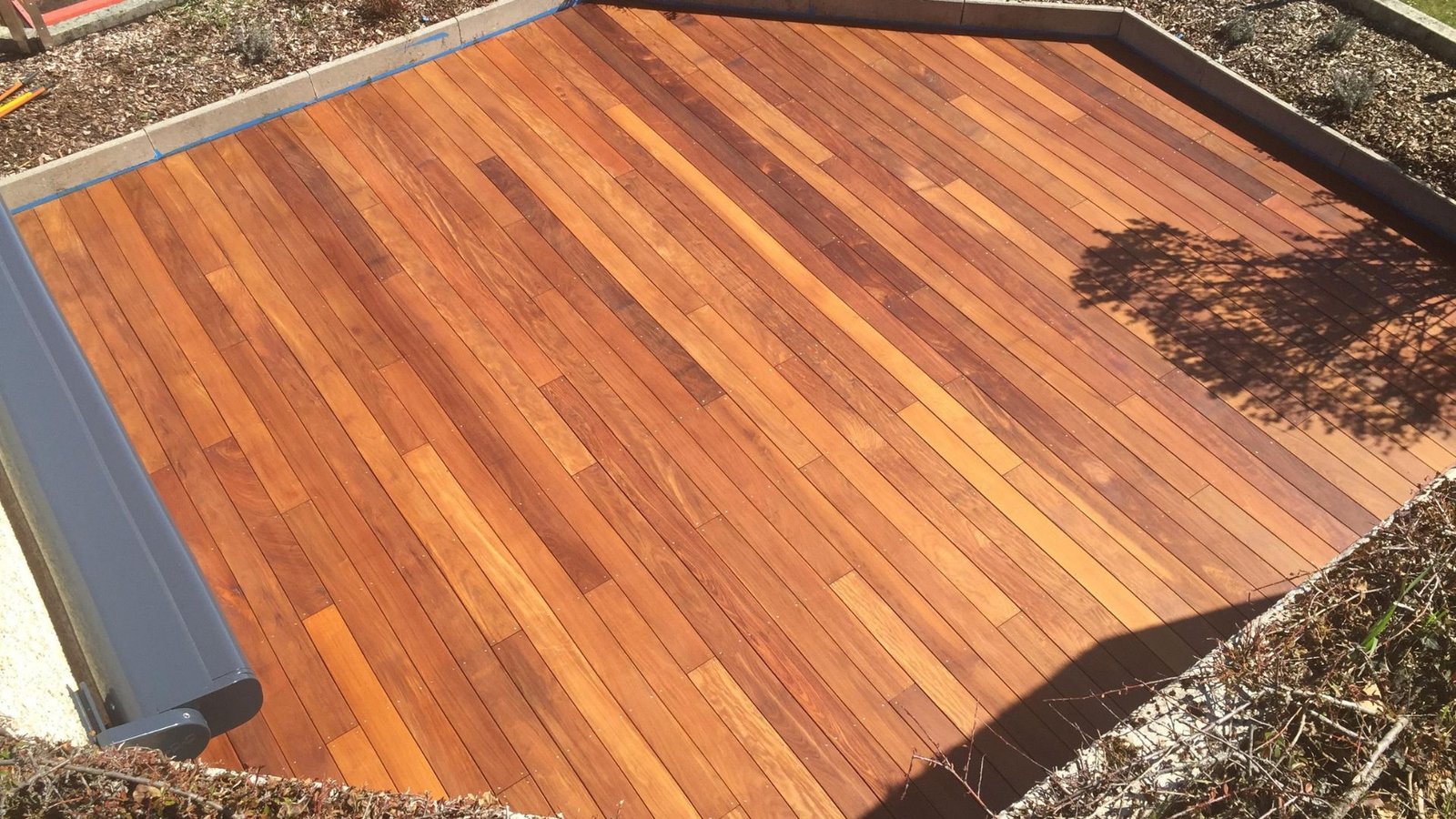Welcome to our comprehensive guide on finding the cheapest decking timber in New Zealand. Decking is a fantastic way to enhance the outdoor living space of your home, providing both aesthetic appeal and functional value. However, choosing the right decking timber can be daunting, especially when trying to balance quality with cost. In this guide, we’ll walk you through everything you need to know about affordable decking options, the factors that influence timber prices, and where to find the best deals. Whether you’re a DIY enthusiast looking to save money or a homeowner planning your dream deck on a budget, this article will equip you with the knowledge to make an informed decision. Let’s dive in and explore how you can create a beautiful, cost-effective deck that stands the test of time.
Looking for the cheapest decking timber in NZ? Pine is often the most affordable option, known for its durability and versatility. Other cost-effective choices include Macrocarpa and recycled timbers. To save money, consider buying in bulk, taking advantage of sales, and comparing prices from multiple suppliers. For more tips on sourcing and maintaining budget-friendly decking timber, check out our comprehensive guide.
Table of Contents
Understanding Decking Timber
What is Decking Timber?
Decking timber refers to the wooden boards and planks used to construct outdoor decks, patios, and similar structures. This material is specifically designed to withstand the elements, providing a durable and aesthetically pleasing surface for outdoor living spaces. Timber decking is a popular choice due to its natural appearance, versatility, and ability to blend seamlessly with various landscape designs.
Decking timber comes in a variety of types, including hardwoods, softwoods, and composite materials. Each type offers different benefits and aesthetics, making it essential to understand the characteristics and suitability of each option for your specific needs.
Uses of Decking Timber
Decking timber is primarily used to create flat, stable surfaces in outdoor areas, making them ideal for a range of applications, such as:
1. Outdoor Decks: Providing a comfortable space for relaxation, dining, and socializing.
2. Patios: Extending living spaces into the outdoors.
3. Garden Paths: Offering a natural and attractive walkway through gardens and landscapes.
4. Pool Surrounds: Creating a non-slip, aesthetically pleasing area around swimming pools.
5. Balconies: Enhancing upper-level outdoor spaces with durable and visually appealing flooring.
Importance of Choosing the Right Timber for Decking
Selecting the right timber for your decking project is crucial for several reasons:
1. Durability: Different types of timber have varying levels of durability and resistance to weather, pests, and decay. Hardwoods like teak and cedar are known for their longevity, while treated softwoods can also provide good durability at a lower cost.
2. Aesthetics: The appearance of your decking can significantly impact the overall look of your outdoor space. Consider the color, grain, and texture of the timber to ensure it complements your design vision. Hardwoods often have richer, more vibrant tones, while softwoods can be stained or painted to achieve the desired look.
3. Maintenance: Some types of timber require more maintenance than others. Hardwoods generally need regular oiling to maintain their appearance, whereas treated softwoods may only need occasional cleaning and sealing. Consider your willingness to invest time and effort in maintaining your deck when choosing timber.
4. Cost: The cost of decking timber varies widely. Hardwoods tend to be more expensive but offer superior durability and aesthetics. Softwoods and composite materials can be more budget-friendly while still providing a good balance of performance and appearance.
5. Environmental Impact: Consider the sustainability of the timber you choose. Look for timber sourced from responsibly managed forests and certified by organizations like the Forest Stewardship Council (FSC). Composite materials made from recycled plastics and wood fibers can also be an eco-friendly option.
Choosing the right decking timber involves balancing these factors to meet your specific needs and preferences. By understanding the characteristics and benefits of different types of timber, you can make an informed decision that enhances the beauty and functionality of your outdoor space for years to come.

Factors Affecting The Cost Of Decking Timber
When planning to build a deck, understanding the various factors that influence the cost of decking timber can help you make an informed decision. Here’s a detailed look at the key elements that affect timber pricing:
Timber Type and Quality
The type of timber you choose is one of the most significant factors influencing cost. Different types of wood, such as pine, cedar, or hardwoods like Kwila and Vitex, vary widely in price. Hardwood options tend to be more expensive due to their durability and aesthetic appeal. The quality of the timber, including its grade and any certifications for sustainability, also plays a crucial role. Higher-grade timber with fewer knots and imperfections is more costly but offers superior strength and appearance.
Supply and Demand Fluctuations
The basic principles of supply and demand heavily influence timber prices. During peak building seasons or times of increased demand, prices can rise. Conversely, prices may drop during off-peak times. Additionally, global supply chain issues, such as those caused by natural disasters or economic conditions, can impact timber availability and cost. Keeping an eye on market trends can help you time your purchase to get the best price.
Treatment and Durability
Timber treatment involves processes that enhance the wood’s resistance to rot, insects, and weathering. Treated timber, such as that pressure-treated with preservatives, tends to be more expensive than untreated wood. However, this added cost can be a worthwhile investment for the longevity and durability of your deck. The level and type of treatment required depend on the timber species and the environmental conditions where the deck will be built.
Size and Dimensions of the Timber
The dimensions of the timber you select will also affect the overall cost. Larger and thicker boards typically cost more due to the additional raw material and processing required. Standard sizes may be more affordable due to mass production efficiencies, while custom sizes can add to the expense. It’s important to carefully measure and plan your decking project to purchase the most cost-effective dimensions for your needs.
Source and Availability
The source of your timber can influence both price and quality. Locally sourced timber often costs less due to lower transportation expenses and supports local economies. Imported timber might come with higher costs due to shipping and import duties but can offer unique characteristics and species not available locally. The availability of certain types of timber can vary, so checking with local suppliers about stock levels and lead times is advisable.
In summary, the cost of decking timber is determined by a variety of factors including the type and quality of wood, market supply and demand, treatment processes, timber dimensions, and the source of the material. By understanding these elements, you can make more informed decisions and potentially save on costs while ensuring the durability and beauty of your deck.
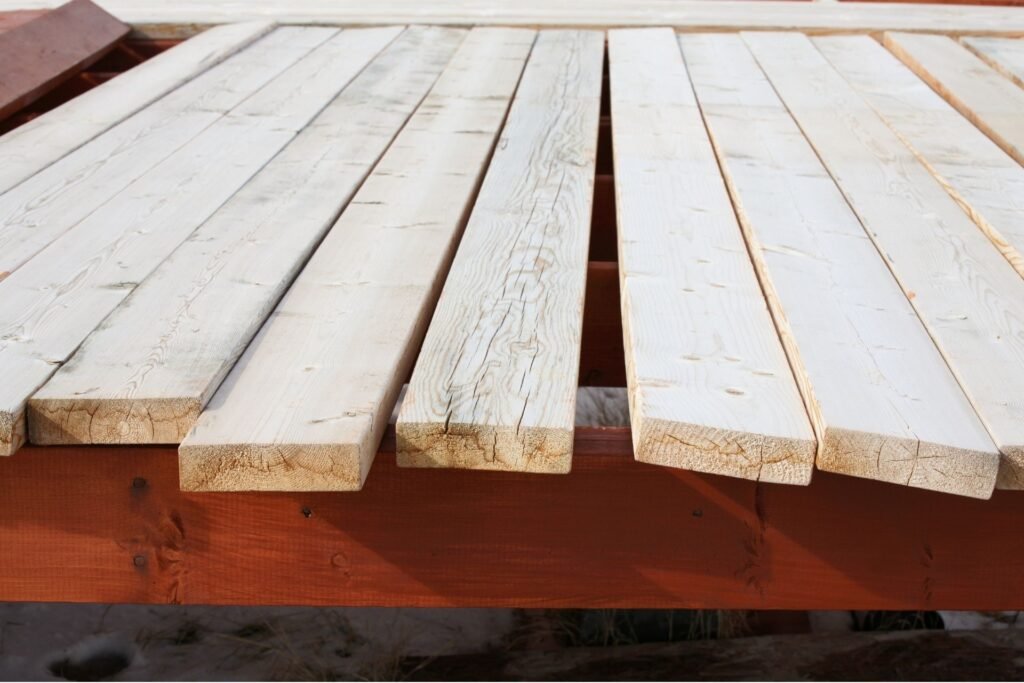
Common Types Of Decking Timber In NZ
Choosing the right decking timber is crucial for the longevity and appearance of your deck. In New Zealand, several types of timber are popular for decking, each with its own set of characteristics, costs, and advantages. Let’s delve into the most common types and their unique qualities.
Pine
Description and Characteristics
Pine is one of the most widely used timbers for decking in New Zealand. It is a softwood that is treated to withstand the elements, making it a durable choice for outdoor use. Treated pine is resistant to rot, fungi, and insects, which adds to its longevity.
Why It’s Often the Cheapest Option
Pine is typically the most affordable decking timber due to its abundant availability and rapid growth rate. The extensive pine plantations in New Zealand ensure a steady supply, keeping the costs low. Moreover, the ease of working with pine makes it a favorite among builders and DIY enthusiasts.
Pros and Cons
Pros:
- Cost-Effective: One of the main advantages of pine is its affordability, making it accessible for a wide range of budgets.
- Easy to Work With: Pine is easy to cut, shape, and install, which can reduce labor costs.
- Treated for Durability: Treated pine is resistant to pests and decay, ensuring a longer lifespan.
Cons:
- Maintenance: Pine requires regular maintenance, such as staining and sealing, to maintain its appearance and durability.
- Softness: As a softwood, pine can be prone to dents and scratches.
- Appearance: While it can be stained or painted, pine does not have the natural beauty of some hardwoods.
Macrocarpa
Description and Characteristics
Macrocarpa, also known as Monterey Cypress, is a softwood native to California but commonly grown in New Zealand. It has a distinctive appearance with a rich, warm color and a fine grain. Macrocarpa is known for its natural durability and resistance to decay without the need for chemical treatment.
Cost Comparison with Pine
While Macrocarpa is generally more expensive than pine, it remains a relatively affordable option compared to imported hardwoods. Its natural resistance to decay and attractive appearance can justify the higher upfront cost for many homeowners.
Pros and Cons
Pros:
- Aesthetic Appeal: Macrocarpa has a beautiful, natural look with a warm hue and fine grain, adding a touch of elegance to any deck.
- Natural Durability: It is naturally resistant to decay and insects, reducing the need for chemical treatments.
- Environmental Friendly: Using locally grown Macrocarpa can be a more sustainable choice compared to imported timbers.
Cons:
- Cost: Although cheaper than hardwoods, Macrocarpa is more expensive than pine.
- Maintenance: Like all timber, Macrocarpa requires regular maintenance to preserve its appearance and durability.
- Availability: It may not be as readily available as pine, depending on the region.
Other Affordable Options
Overview of Other Cost-Effective Timber Types
Besides pine and Macrocarpa, there are other affordable timber options for decking in New Zealand. These include Eucalyptus and other locally sourced timbers. Each of these timbers has its unique properties and benefits.
Eucalyptus
Eucalyptus is a hardwood known for its strength and durability. It has a rich, reddish-brown color and can be a cost-effective alternative to more expensive hardwoods. Eucalyptus is resistant to decay and insects, making it a suitable option for decking.
Locally Sourced Timbers
New Zealand offers a variety of locally sourced timbers that can be used for decking. These timbers are often more sustainable and environmentally friendly. Options such as Larch and Douglas Fir are becoming increasingly popular due to their affordability and durability.
Pros and Cons
Pros:
- Durability: Many of these timbers are naturally resistant to decay and pests.
- Aesthetic Variety: Different timbers offer a range of colors and grains, allowing for unique and personalized deck designs.
- Sustainability: Using locally sourced timber supports sustainable forestry practices and reduces the carbon footprint associated with importing wood.
Cons:
- Variable Availability: Some of these timbers may not be consistently available in all regions.
- Maintenance: Regular maintenance is necessary to keep the timber looking its best and prolong its lifespan.
- Cost Variability: Prices can vary depending on the type of timber and local supply conditions.
In summary, when selecting decking timber in New Zealand, it’s essential to consider factors such as cost, durability, maintenance, and aesthetic appeal. Pine, Macrocarpa, and other affordable options like Eucalyptus provide a range of choices to suit different budgets and design preferences. Regular maintenance and thoughtful selection can ensure a beautiful and long-lasting deck.

Where To Buy Cheap Decking Timber In NZ
When it comes to finding affordable decking timber in New Zealand, there are several avenues you can explore to ensure you get the best value for your money. Let’s delve into the options available and understand the benefits and potential pitfalls of each.
Local Timber Suppliers
Benefits of Buying Locally
Purchasing decking timber from local suppliers offers several advantages. Firstly, you can personally inspect the quality of the timber before making a purchase. This hands-on approach ensures that you get exactly what you need, avoiding any unpleasant surprises upon delivery. Additionally, local suppliers often provide personalized customer service, offering expert advice and recommendations tailored to your specific project. Supporting local businesses also helps stimulate the local economy, creating jobs and fostering community development.
Examples of Reliable Local Suppliers
In New Zealand, there are numerous reputable local timber suppliers to consider. Some well-known options include:
- Timspec – Known for their high-quality timber products and excellent customer service.
- ITM (Independent Timber Merchants) – A nationwide network offering a wide range of building supplies, including decking timber.
- Bunnings Warehouse – A popular choice for DIY enthusiasts, offering competitive prices and a vast selection.
Online Retailers
Benefits and Risks of Buying Online
Shopping for decking timber online can be highly convenient, allowing you to browse a wide variety of options from the comfort of your home. Online retailers often provide detailed product descriptions and customer reviews, helping you make an informed decision. Additionally, online shopping can sometimes offer better deals and discounts compared to physical stores.
However, there are also risks to consider. The primary concern is the inability to physically inspect the timber before purchase, which can lead to discrepancies in quality or appearance. Shipping costs and times can also vary, potentially affecting the overall cost and timeline of your project. It is crucial to research and choose reputable online platforms to mitigate these risks.
Recommended Online Platforms
Several online platforms are known for their reliability and extensive selection of decking timber. Some recommended options include:
- TradeMe – New Zealand’s largest online marketplace, offering both new and second-hand timber from various sellers.
- Mitre 10 – A well-established retailer with an online presence, offering a wide range of building materials.
- NZ Timber – Specializing in timber products, this platform provides detailed information and competitive pricing.
Recycled and Second-Hand Timber
How to Source Recycled Timber
Sourcing recycled timber can be a sustainable and cost-effective option for your decking project. Start by checking local demolition yards and salvage companies, which often have a variety of reclaimed timber available. Additionally, online marketplaces like TradeMe and community groups on social media platforms can be valuable resources for finding second-hand timber.
Cost Benefits and Environmental Impact
Using recycled timber not only helps reduce costs but also has significant environmental benefits. Reclaimed timber often comes at a fraction of the price of new timber, making it an attractive option for budget-conscious projects. Environmentally, recycling timber reduces the demand for new wood, helping to conserve forests and reduce carbon emissions associated with logging and processing new materials.
By considering these various options and their respective benefits, you can find affordable decking timber in New Zealand that meets your needs while supporting sustainable practices and local businesses.
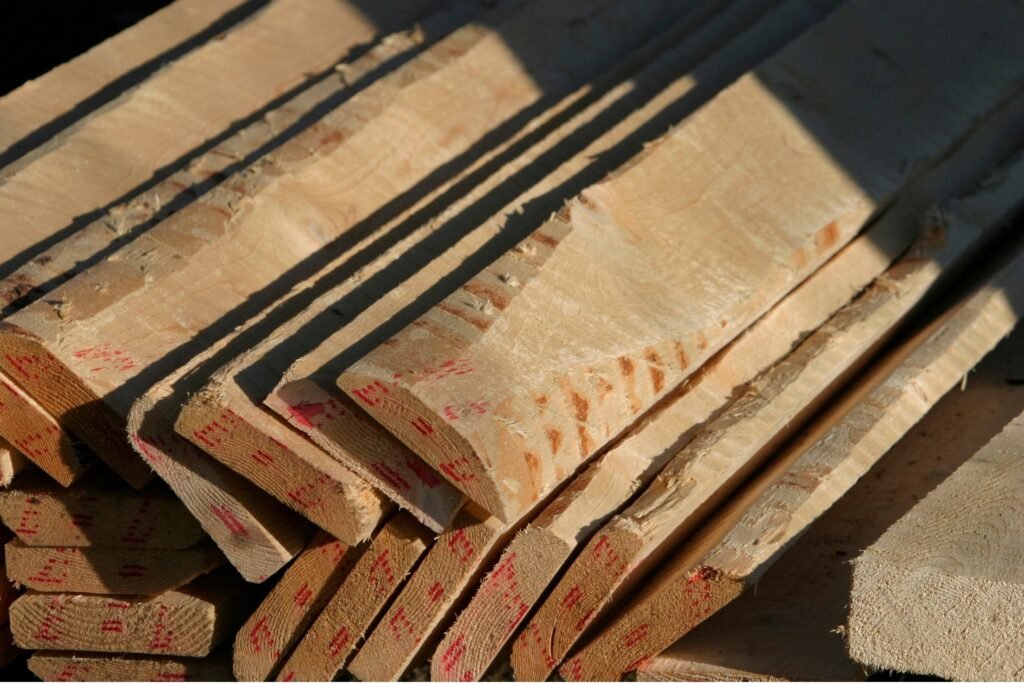
Tips For Saving Money On Decking Timber
Creating a beautiful deck doesn’t have to break the bank. Here are some savvy tips to help you save money on decking timber while ensuring you get quality materials for your project.
Buying in Bulk
One of the simplest ways to save money on decking timber is to buy in bulk. Suppliers often offer significant discounts for larger orders. If you have a large project or can combine your order with a neighbor or friend, you can take advantage of these bulk pricing benefits. Not only does this reduce the cost per unit, but it also ensures you have enough timber to complete your project without making multiple trips to the store.
Taking Advantage of Sales and Discounts
Keeping an eye out for sales and discounts can also help you save a substantial amount. Many suppliers have periodic sales, especially during off-peak seasons. Signing up for newsletters from your local timber suppliers or following them on social media can alert you to upcoming promotions. Additionally, end-of-line sales can be a goldmine for discounted decking timber, allowing you to buy high-quality wood at a fraction of the regular price.
Considering Untreated Timber and Treating It Yourself
Untreated timber is typically less expensive than pre-treated wood. By purchasing untreated timber and treating it yourself, you can save money. While this approach requires additional time and effort, it allows you to control the quality and type of treatment applied, potentially increasing the lifespan of your deck. Ensure you use appropriate treatments to protect your timber from pests, moisture, and UV damage.
Comparing Prices from Multiple Suppliers
Don’t settle for the first price you see. Take the time to compare prices from multiple suppliers. This might involve visiting local stores or searching online. Prices can vary significantly between suppliers, and some may offer better deals or additional services such as free delivery. Additionally, negotiating with suppliers, especially if you’re buying in bulk, can sometimes result in better pricing.
Utilizing Trade Accounts or Discounts
If you’re undertaking a large project or planning multiple projects over time, consider setting up a trade account with your supplier. Many suppliers offer trade accounts that come with discounts, better payment terms, and exclusive deals. Even if you’re not a professional builder, some suppliers offer trade-like accounts for regular customers or for those undertaking significant home improvement projects.
By incorporating these tips, you can significantly reduce the cost of your decking timber without compromising on quality. Smart shopping and a bit of extra effort can make your dream deck a reality while keeping your budget in check.

DIY Vs. Hiring A Professional
When embarking on a decking project, one of the first decisions you’ll face is whether to tackle it yourself or hire a professional. This choice can significantly impact your budget, the quality of the final product, and the overall experience of the project. Let’s break down the key considerations to help you make an informed decision.
Cost Comparison: DIY Decking vs. Hiring a Professional
DIY Decking Costs
- Materials: When you opt for a DIY approach, you have direct control over the materials you choose. This can range from budget-friendly options like treated pine to high-end choices such as composite decking. Generally, materials for a DIY deck might cost between $20 to $70 per square meter, depending on your selection.
- Tools and Equipment: If you don’t already own the necessary tools, you might need to invest in items like a power drill, saw, and measuring tools. Renting or purchasing these tools can add to the overall cost.
- Time: Time is an often overlooked cost. A DIY deck can take several weekends or even months to complete, depending on your availability and experience level.
Professional Decking Costs
- Labor: Hiring a professional will typically cost more upfront, with labor charges ranging from $50 to $100 per hour, depending on the complexity of the project and the expertise of the contractor.
- Quality and Warranty: Professionals often provide a warranty for their work, offering peace of mind that any issues will be addressed without additional cost to you. This can be a significant advantage over a DIY approach where any mistakes are your responsibility to fix.
Pros and Cons of Each Approach
DIY Decking
Pros:
- Cost Savings: One of the most significant advantages of DIY decking is the potential for cost savings. By eliminating labor costs, you can allocate more of your budget toward higher-quality materials.
- Personal Satisfaction: Building your own deck can be incredibly rewarding. It’s a chance to learn new skills and take pride in a project you completed with your own hands.
- Flexibility: You have complete control over the project timeline and can make adjustments as you see fit.
Cons:
- Time-Consuming: DIY projects can take much longer to complete, especially if you have limited experience or time to dedicate to the project.
- Skill Level: Building a deck requires a certain level of skill and knowledge. Mistakes can be costly and time-consuming to fix.
- Safety Concerns: Improper construction can lead to safety hazards, which is particularly concerning for structures meant to support weight and withstand the elements.
Hiring a Professional
Pros:
- Expertise and Quality: Professionals bring years of experience and can ensure that your deck is built to code and to a high standard of quality.
- Time Efficiency: A professional team can complete the project much faster than a DIY approach, allowing you to enjoy your new deck sooner.
- Warranty and Support: Many contractors offer warranties on their work, providing you with a safety net in case of future issues.
Cons:
- Higher Cost: The most significant downside of hiring a professional is the higher upfront cost. Labor charges can significantly increase your overall budget.
- Less Personal Involvement: If you enjoy hands-on projects, you might miss out on the personal satisfaction of building something yourself.
Tips for DIY Decking on a Budget
If you decide that the DIY route is right for you, here are some tips to help you stay within budget without sacrificing quality:
- Plan Thoroughly: Take the time to plan your deck carefully. Detailed planning can help you avoid costly mistakes and ensure that you purchase the right amount of materials.
- Source Materials Wisely: Look for sales, discounts, and recycled materials. Sometimes, you can find high-quality materials at a fraction of the cost.
- Borrow or Rent Tools: Instead of buying expensive tools, consider borrowing from friends or renting from a local hardware store.
- Learn from Experts: There are plenty of online tutorials and guides from professionals that can provide valuable insights and tips for your project.
- Start Small: If you’re new to DIY projects, consider starting with a smaller deck. This will give you a chance to build your skills and confidence before taking on a larger project.
By weighing the costs, benefits, and challenges of DIY versus hiring a professional, you can make the best decision for your decking project. Whether you choose to take on the project yourself or hire an expert, the end goal is a beautiful, functional deck that enhances your outdoor living space.

Case Studies And Real-Life Examples
Interviews with Homeowners Who Have Built Affordable Decks
One of the best ways to understand how to build an affordable deck is by learning from those who have already done it. We conducted interviews with several homeowners who successfully constructed cost-effective decks. Here are their stories and insights:
John and Lisa’s Backyard Transformation
John and Lisa wanted to create a cozy outdoor space without breaking the bank. They opted for a simple design using pressure-treated pine, a budget-friendly material. By doing much of the work themselves and sourcing materials during sales, they managed to build a beautiful deck for under $2,000.
Key Takeaways
- DIY Approach: Doing the work themselves saved a significant amount on labor costs.
- Material Choices: Pressure-treated pine is an economical choice that still looks great.
- Shopping Smart: Taking advantage of sales and discounts can reduce overall expenses.
Sarah’s Multi-Use Deck Space
Sarah needed a versatile deck for hosting guests and practicing yoga. She chose composite decking due to its durability and low maintenance. By carefully planning the project and hiring a local contractor during the off-season, she kept the costs to around $5,000.
Key Takeaways
- Composite Decking: While initially more expensive, it saves money long-term on maintenance.
- Seasonal Savings: Hiring contractors in their off-peak season can lead to lower labor costs.
- Clear Vision: Knowing exactly what she wanted helped Sarah avoid unnecessary expenses.
Examples of Cost-Effective Decking Projects
Below are a few examples of cost-effective decking projects that highlight various strategies for keeping costs down while achieving fantastic results.
The Simple Elegance Deck
This project featured a straightforward, single-level deck using cedar wood. The homeowner prioritized simplicity and elegance, avoiding complex designs that could drive up costs. The total expenditure was approximately $3,500.
Strategies Used
- Minimalist Design: Sticking to a simple design reduces both material and labor costs.
- Cedar Wood: Although slightly more expensive than pine, cedar’s natural resistance to rot and pests can lead to savings on maintenance and repairs.
The Reclaimed Wood Deck
An environmentally conscious homeowner built their deck using reclaimed wood sourced from old barns and pallets. Not only did this approach significantly cut down on material costs, but it also added a unique, rustic charm to their outdoor space. The total cost was about $1,500.
Strategies Used
- Reclaimed Materials: Using reclaimed wood can be a cost-effective and eco-friendly option.
- Unique Aesthetics: The distinct look of reclaimed wood adds character without extra expense.
Lessons Learned and Tips from Their Experiences
From these case studies and real-life examples, several valuable lessons and tips can be gleaned:
Plan Thoroughly
Thorough planning is crucial. Knowing what you want and having a detailed plan can prevent costly changes and delays. Homeowners who spent more time in the planning phase tended to spend less overall.
DIY When Possible
If you have the skills and time, consider doing some or all of the work yourself. Labor costs can be a significant portion of the budget, and even partial DIY can lead to substantial savings.
Choose Materials Wisely
Material choice impacts both the initial cost and long-term expenses. While pressure-treated pine is affordable upfront, options like composite decking can save money on maintenance over time. Consider the total cost of ownership when choosing materials.
Shop Smart
Look for sales, discounts, and bulk purchasing options. Many homeowners save hundreds of dollars by purchasing materials during sales or buying in bulk.
Consider the Timing
Hiring contractors during their off-peak seasons can lead to lower labor costs. Additionally, building your deck during the cooler months can avoid the higher prices and longer wait times of the peak summer season.
By following these tips and learning from those who have successfully built affordable decks, you can create a beautiful and functional outdoor space without overspending.

Maintaining Your Deck On A Budget
Maintaining your deck doesn’t have to break the bank. With a few smart strategies and affordable products, you can keep your deck looking great and extend its lifespan. Here’s how you can maintain your deck on a budget.
Affordable Maintenance Tips
Regular maintenance is key to preserving your deck, and it doesn’t have to be expensive. Here are some cost-effective tips:
1. Regular Cleaning: Sweep your deck regularly to prevent dirt and debris from accumulating. This simple step can prevent long-term damage and maintain the deck’s appearance.
2. Annual Deep Cleaning: Once a year, give your deck a thorough cleaning. You can do this with a homemade solution of water and mild dish soap. Scrub the deck with a brush, rinse thoroughly, and let it dry completely.
3. Check for Damage: Regularly inspect your deck for any signs of damage like loose boards or nails, cracks, or rot. Early detection can save you from expensive repairs down the line.
4. Protect from Furniture: Place pads under the legs of your outdoor furniture to prevent scratches and dents on your deck.
Cost-Effective Products for Deck Cleaning and Sealing
Choosing the right products for cleaning and sealing your deck can save you money in the long run. Here are some budget-friendly options:
1. Homemade Cleaners: For a cheap and effective cleaning solution, mix vinegar and water in a spray bottle. This mixture can tackle mold and mildew without the need for expensive cleaners.
2. Affordable Deck Cleaners: If you prefer store-bought solutions, look for generic or store-brand deck cleaners. These often work just as well as name brands but at a fraction of the cost.
3. Sealers and Stains: Invest in a good-quality sealer or stain to protect your deck. While this might seem like a higher upfront cost, it will save you money by extending the life of your deck. Look for products that offer long-lasting protection and are easy to apply.
Importance of Regular Maintenance to Extend the Life of Your Decking Timber
Regular maintenance is crucial for extending the life of your decking timber. Here’s why:
1. Prevents Rot and Decay: Regular cleaning and sealing prevent moisture from seeping into the wood, which can lead to rot and decay. By keeping your deck dry and protected, you prolong its life and avoid costly repairs or replacements.
2. Maintains Appearance: Regular maintenance keeps your deck looking its best. A well-maintained deck enhances your outdoor space and adds value to your home.
3. Ensures Safety: Keeping an eye on the structural integrity of your deck is essential for safety. Regular inspections and minor repairs prevent accidents and ensure your deck remains a safe place for your family and guests.
4. Cost Savings: By investing a little time and money in regular maintenance, you save on major repair costs down the line. Preventive care is always more affordable than reactive repairs.
In conclusion, maintaining your deck on a budget is entirely feasible with some thoughtful strategies and affordable products. Regular cleaning, using cost-effective cleaning solutions, and understanding the importance of regular maintenance will help you preserve the beauty and functionality of your deck for years to come. So, take a proactive approach and enjoy your well-maintained deck without worrying about high costs.

FAQs: About Cheapest Decking Timber NZ
What is the cheapest decking timber available in New Zealand?
Pine is often the most affordable decking timber option in New Zealand due to its abundance and versatility. Other cost-effective choices include Macrocarpa and recycled timbers.
Why is pine considered the cheapest decking timber?
Pine is widely available, grows quickly, and can be easily treated to enhance its durability, making it a cost-effective option for decking.
Are there any drawbacks to using cheap decking timber?
While cheaper timbers like pine are budget-friendly, they may require more maintenance and treatment to ensure longevity compared to more expensive hardwood options.
Where can I buy cheap decking timber in New Zealand?
You can purchase affordable decking timber from local timber suppliers, online retailers, and by sourcing recycled or second-hand timber from various outlets.
Is it better to buy decking timber online or from local suppliers?
Buying from local suppliers can offer benefits like seeing the timber quality in person and avoiding shipping costs, while online retailers might offer a wider selection and competitive prices.
Can I save money by treating the timber myself?
Yes, buying untreated timber and treating it yourself can save money, but it requires time, effort, and the right materials to ensure effective treatment.
What are the benefits of using recycled timber for decking?
Recycled timber is often cheaper, environmentally friendly, and can add unique character to your deck. However, it may require more preparation and inspection to ensure it is safe and suitable for use.
How can I ensure my cheap decking timber lasts longer?
Regular maintenance, such as cleaning, sealing, and treating the timber, is essential to extend the lifespan of your decking. Following a consistent maintenance schedule can prevent damage and deterioration.
Should I hire a professional to install my decking or do it myself?
DIY installation can save money on labor costs, but it requires skill and time. Hiring a professional ensures quality work and can save you from potential mistakes, but it comes at a higher cost.
What are some tips for maintaining a budget-friendly deck?
Use cost-effective cleaning and sealing products, perform regular inspections for damage, address any issues promptly, and follow a consistent maintenance routine to keep your deck in good condition without overspending.
Conclusion
In conclusion, this guide has provided a comprehensive overview of the essential factors to consider when planning and building an affordable deck in New Zealand. We’ve explored various decking materials, compared their costs and benefits, and outlined practical steps to ensure your project is both cost-effective and durable. By following these guidelines, you’re well on your way to creating a beautiful outdoor space that enhances your home without breaking the bank. We encourage you to take the next steps in your decking journey with confidence. If you have any questions or want to share your experiences, we invite you to join the conversation in the comments below. Your insights and inquiries are valuable to us and the community.
About the Author:
Mike Veail is a recognized digital marketing expert with over 6 years of experience in helping tradespeople and small businesses thrive online. A former quantity surveyor, Mike combines deep industry knowledge with hands-on expertise in SEO and Google Ads. His marketing strategies are tailored to the specific needs of the trades sector, helping businesses increase visibility and generate more leads through proven, ethical methods.
Mike has successfully partnered with numerous companies, establishing a track record of delivering measurable results. His work has been featured across various platforms that showcase his expertise in lead generation and online marketing for the trades sector.
Learn more about Mike's experience and services at https://theleadguy.online or follow him on social media:



